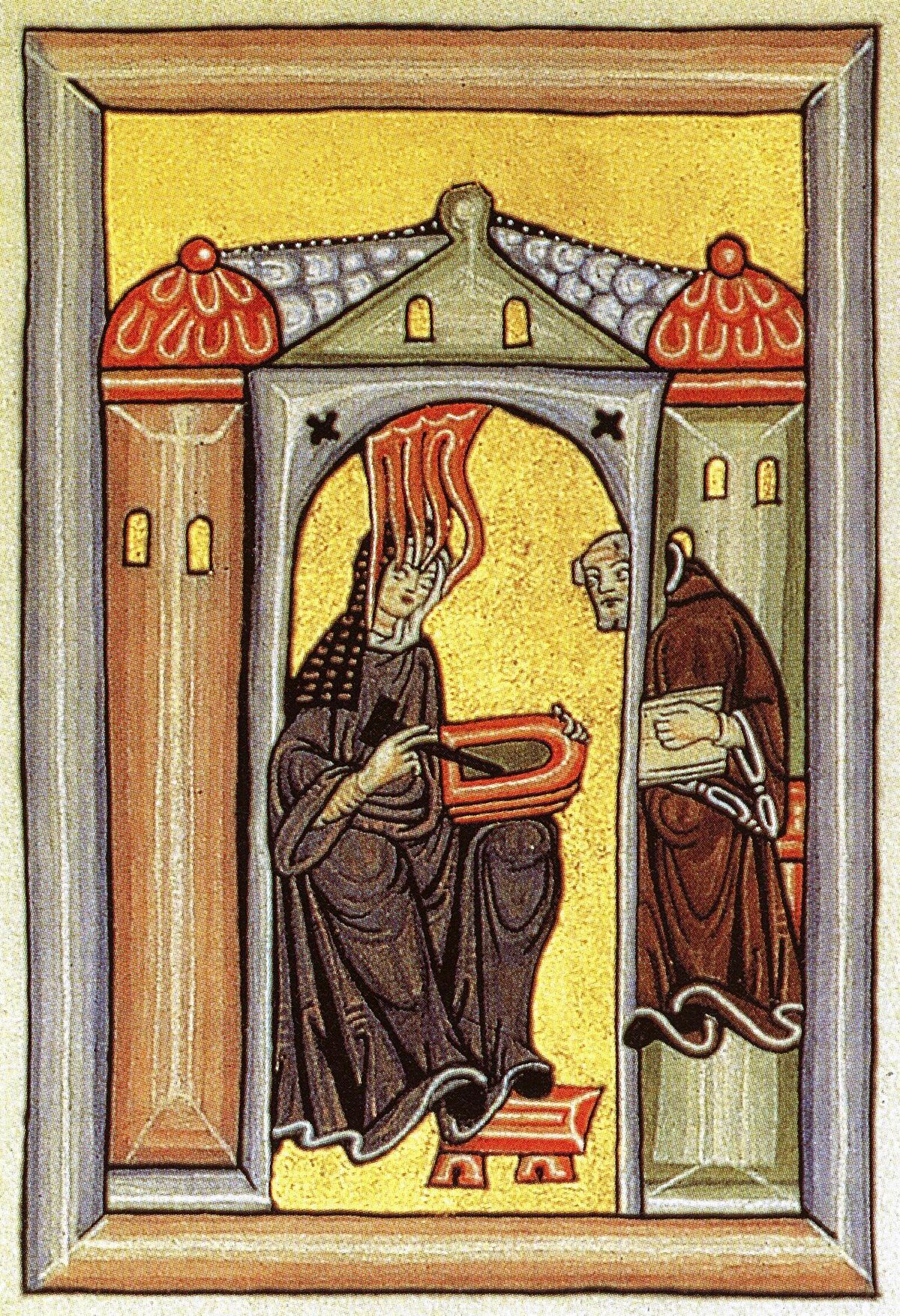Throughout history, women have been expected to comply
with the rules and roles that a patriarchal society has deemed appropriate. Being
taught to be submissive from birth, it has been difficult for women to be able
to vocalize and fight for control of their lives. Because of this, women artists
in particular have had such difficulty expressing and advocating for their
rights in a world that is uncomfortable with confronting the issues of gender
inequality that are still relevant, though less extreme, today.
 |
| Hildegard of Bingen, Scivias, c1142-52 |
As the Renaissance emerged, women were arguably even
more excluded and certainly not credited for their art. In the words of Whitney
Chadwick from her book Women, Art, and
Society, “Art history’s conception of the Renaissance as an historically,
geographically, and culturally unique period is based on the lives and
achievements of men” (87). The system of art was closed to women, with the
exception of lace and silkmakers guild. Women could not receive commissions,
many were illiterate, and they could not legally own an atelier. The only way a
woman was permitted to be an artist was if she was born into a family with an artist
that needed help in a workshop. For instance, Maria Robusti was the daughter of
Jacopo Tintoretto and worked for him for fifteen years, declining invitations to
work for the King of Spain and the Emperor of Austria because her father did
not give her permission to go. It is believed that she was the artists behind
many works that he signed, and this discrediting and control over women artists
can also be seen in artists Lavinia Fontana and Elisabetta Sirani. Even if
women were to produce exceptional art work, they were insulted and their
success was minimized by a society that deemed these women miracles or
visionaries of the sort, rather than accepting that a woman could simply create
an impressive piece of art. During the Renaissance, if a man raped a woman, the
woman could save her reputation if that man asked to marry her (Guerrilla
Girls, 32). This was true for Artemisia Gentileschi, who was raped by Agostino
Tassi, a colleague of Artemisia’s father. Unheard of at the time, Artemisia’s
father took the case to court. Artemisia most famous work, Judith Slaying Holfernes, depicts a Jewish woman killing an
Assyrian general by first seducing him and then cutting of his head. In contrast
to other artists, Gentileschi portrays Judith staring at Holfernes’ head as she
slays him, expressing female strength and courage in a time when women were seen
as weak, inferior, and were taken advantage of as she was.
 |
| Artemisia Gentileschi, Judith Decapitating Holfernes, 1618 |
 |
| Caravaggio, Judith Beheading Holfernes, 1599 |
 |
| Rachel Ruysch, Flowerpiece, after 1700 |
Approaching the 19th Century, the topics of
abolition and women’s suffrage had influence on women of the time. Fighting for
the emancipation of slaves, women identified with a lack of rights and freedom and
therefore were advocates of independence and basic rights. Edmonia Lewis’ work,
Forever Free, speaks to this subject
of emancipation and the oppression of slavery. During the 19th
century, technological advances also lead to photography, something women have
been included in since the beginning of its uses, as conveyed with the work of
Julia Margaret Cameron. The 19th century also propels the world into
Impressionism, which uses smaller brush strokes, the illusion of movement of light,
and odd angles. This art, highly criticized for the time, was practiced by Mary
Cassatt. Her pieces, Mother and Child and
A Cup of Tea “brings an incisive eye
to bear on the rituals and gestures through which femininity is constructed and
signified:…attending children, taking tea, visiting” (Chadwick, 238).
From the Middle Ages through the 19th
century and even to today, women have fought for a voice in society. Women
artists express life through the point of view of a woman, and we need to
continue to communicate this to the world to reach gender equality.
-Nicole Arena
Works Cited
Chadwick, Whitney.
Women, Art, and Society. 4th ed. New York, N.Y.: Thames and
Hudson, 1990. Print.
The Guerrilla Girls’
Bedside Companion to the History of Western Art. New York: Penguin, 1998.
Print.


No comments:
Post a Comment